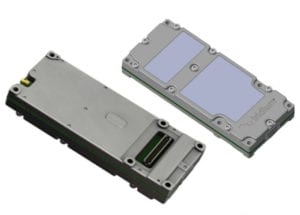Latest News

The Iridium Certus 9770 transceiver. Photo: Iridium
Iridium Communications approved the first 10 beta partners developing new products based on the Iridium Certus 9770 transceiver. Each partner has received operational beta units, which have been undergoing extensive testing designed to fine-tune both the new transceiver and the first new solutions they will enable in preparation for service activation.The Iridium Certus 9770 transfers Internet Protocol (IP) data over 35 times faster than its predecessors while also supporting voice connections. This new midband device, with L-band speeds ranging from 22 Kbps to 88 Kbps, aims to expand the reach of satellite services to new markets, ranging from unmanned and autonomous drones to new personal communicators and remotely deployed Internet of Things (IoT) devices, all connected through Iridium’s L-band network.
The 10 companies currently testing a new generation of small-form factor satellite-enabled devices for maritime, aviation, land-mobile, IoT and government applications include: Beam Communications, Blue Sky Network, Cobham, Lars Thrane, Marine Instruments, McQ, NAL Research, SkyTrac Systems, Telespazio, and Wireless Innovation. Upon completion of testing, the Iridium Certus 9770 transceiver will be made available to additional Iridium licensed technology and distribution partners, expected in the first quarter of 2020.
“This new breed of device is the start of a shift in what defines small-form-factor satellite communications technology,” said Matt Desch, CEO of Iridium. “These are highly mobile, lower-cost solutions that feature native IP technology at speeds capable of delivering a true internet, email, high-quality voice, photo and even some video capabilities. When you combine that with our truly global coverage, we’re creating a cost-effective and reliable ecosystem of new products in a new L-band speed class, midband, that is unlike anything that exists from the satellite community today.”
Get the latest Via Satellite news!
Subscribe Now